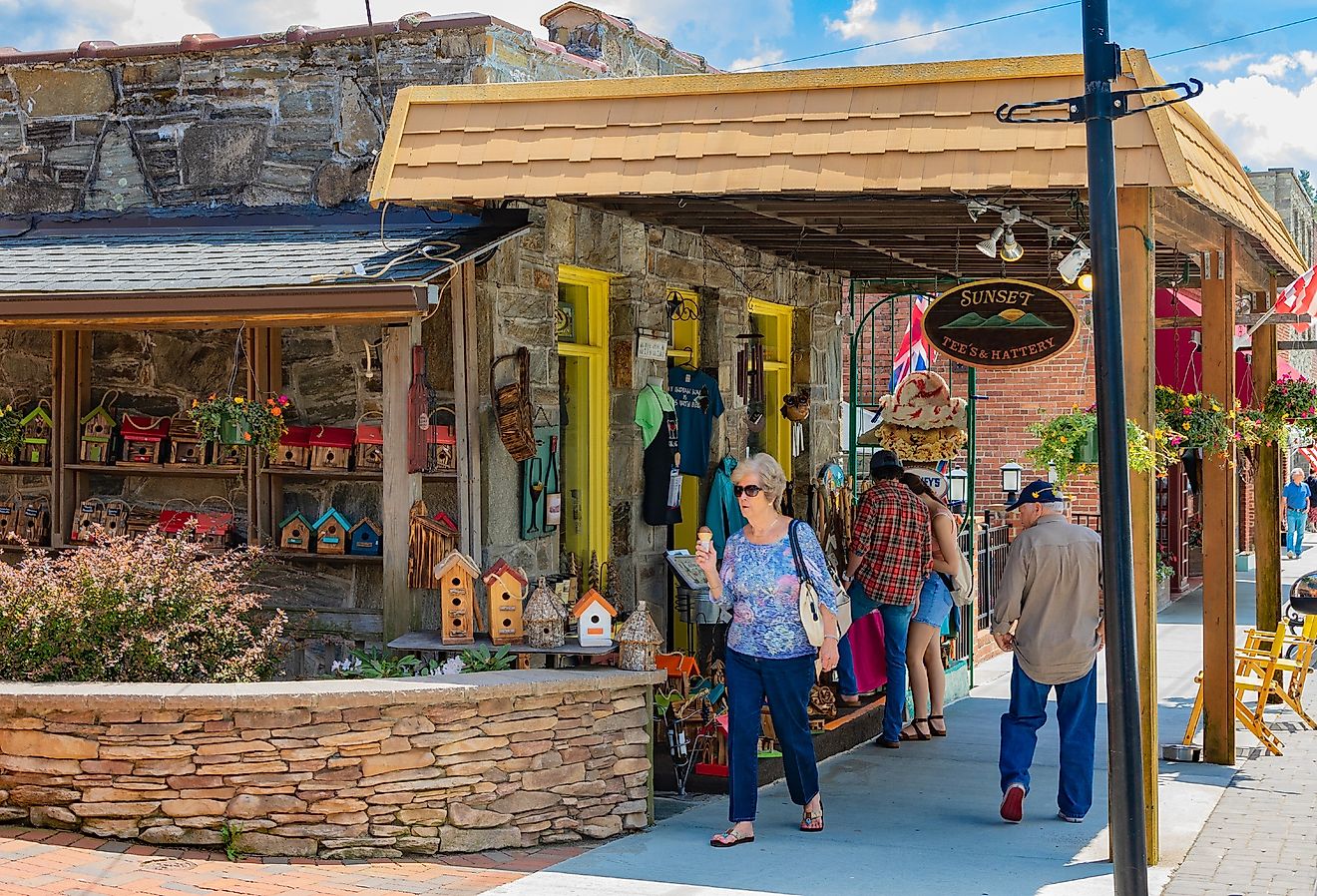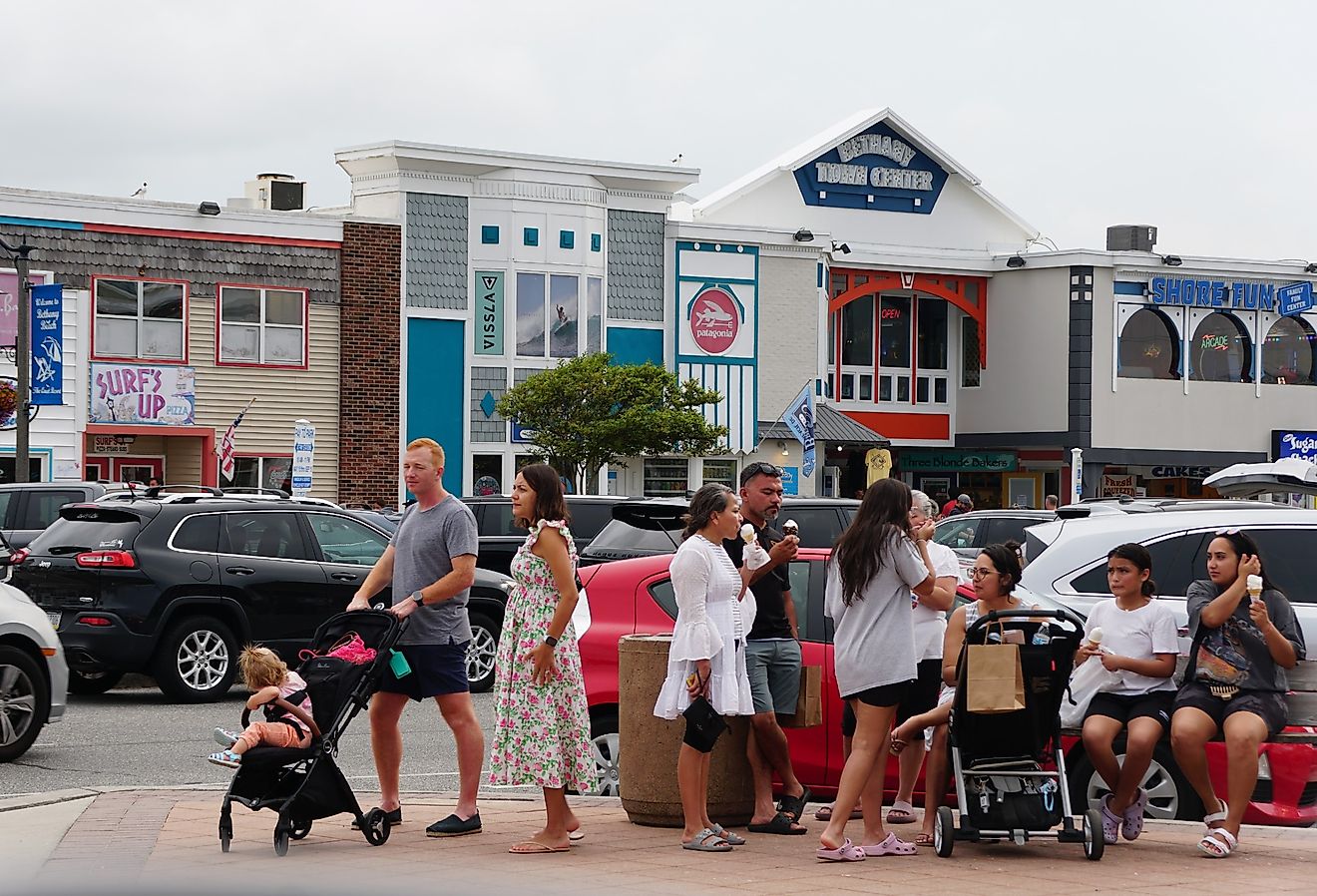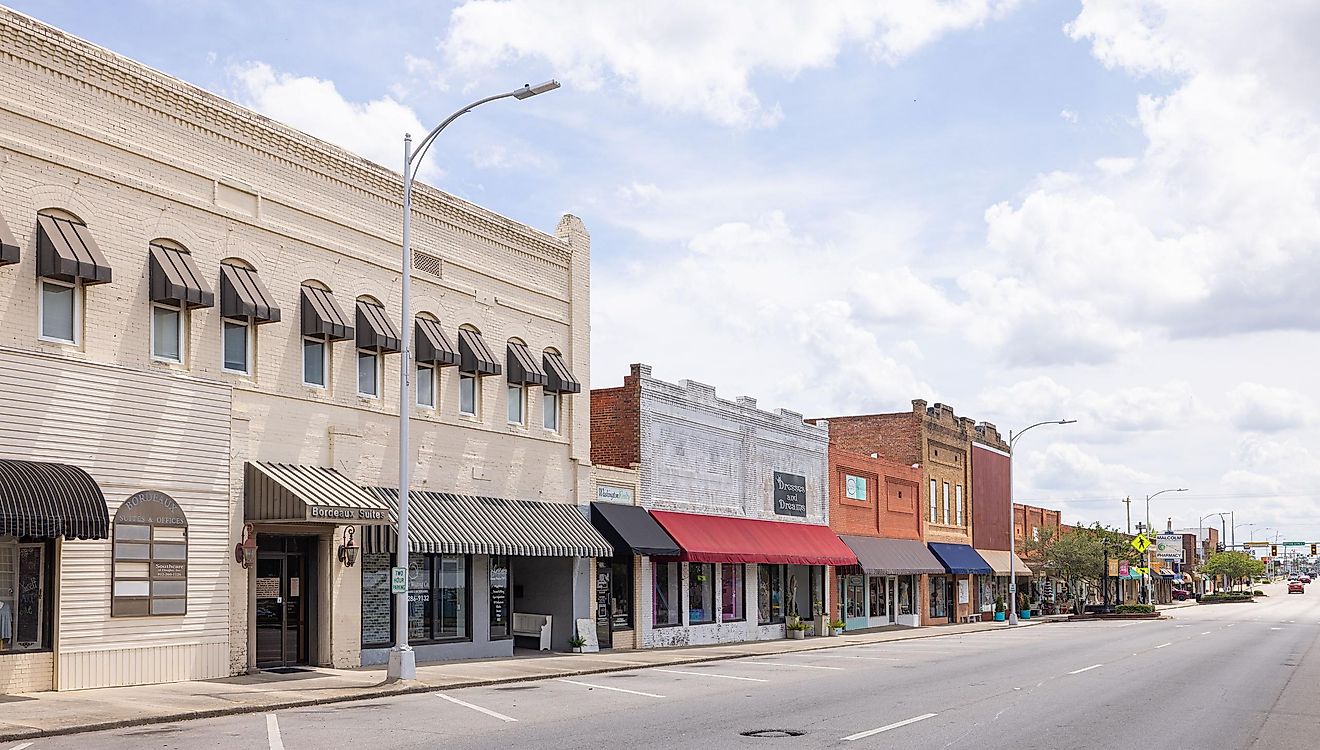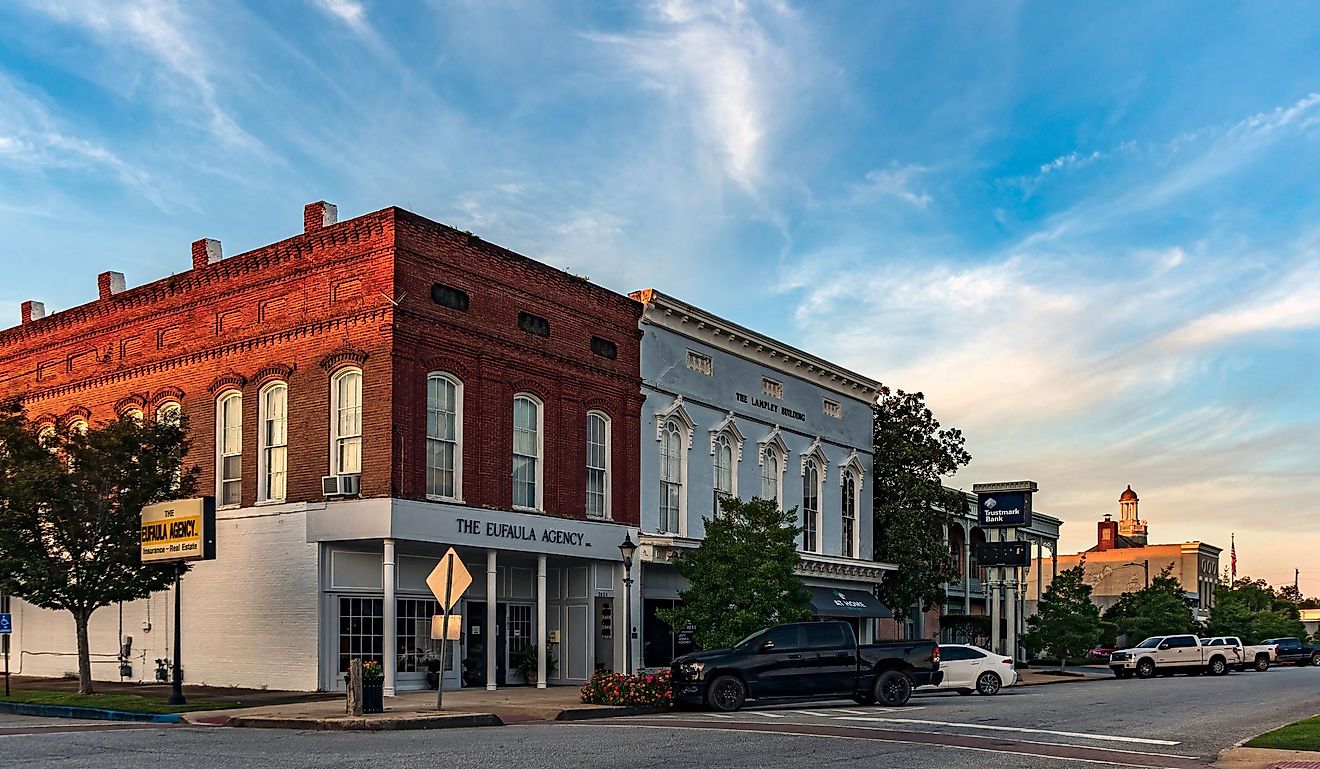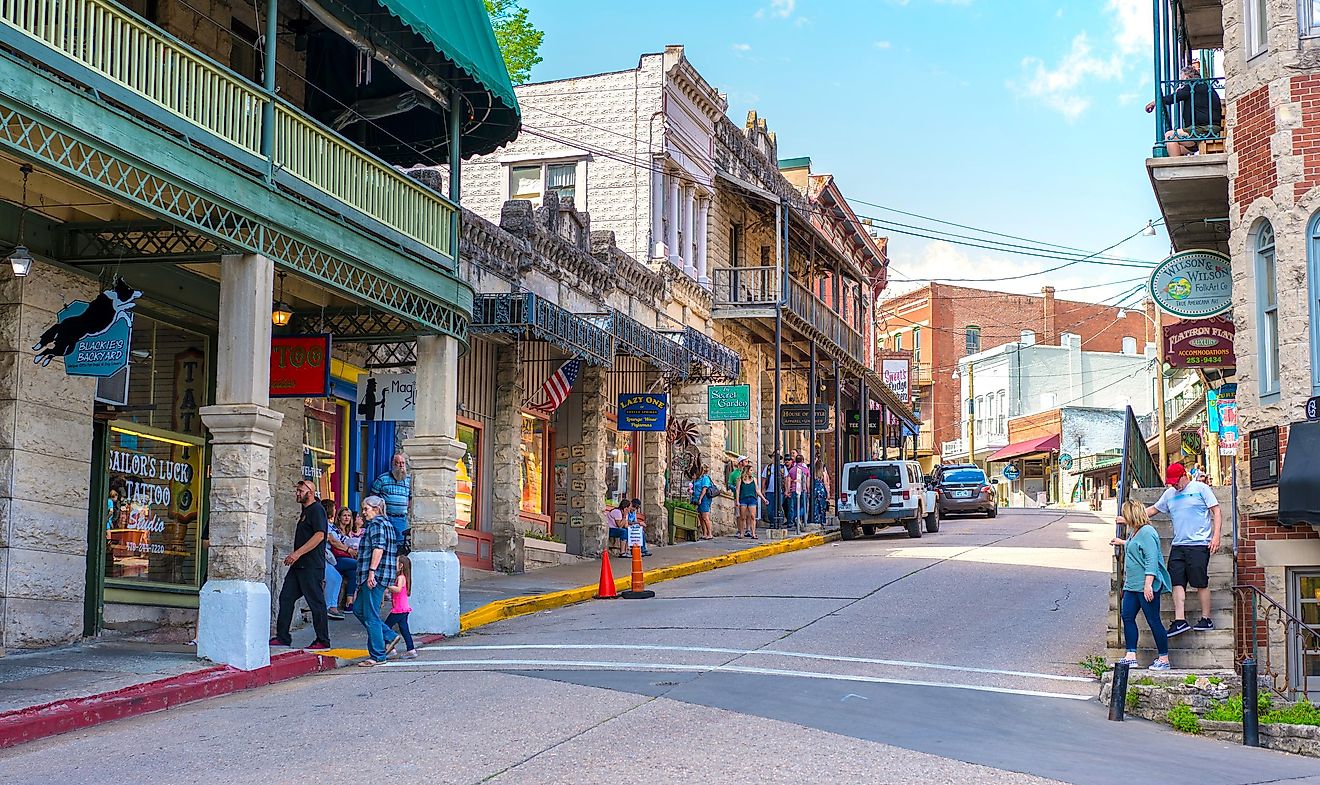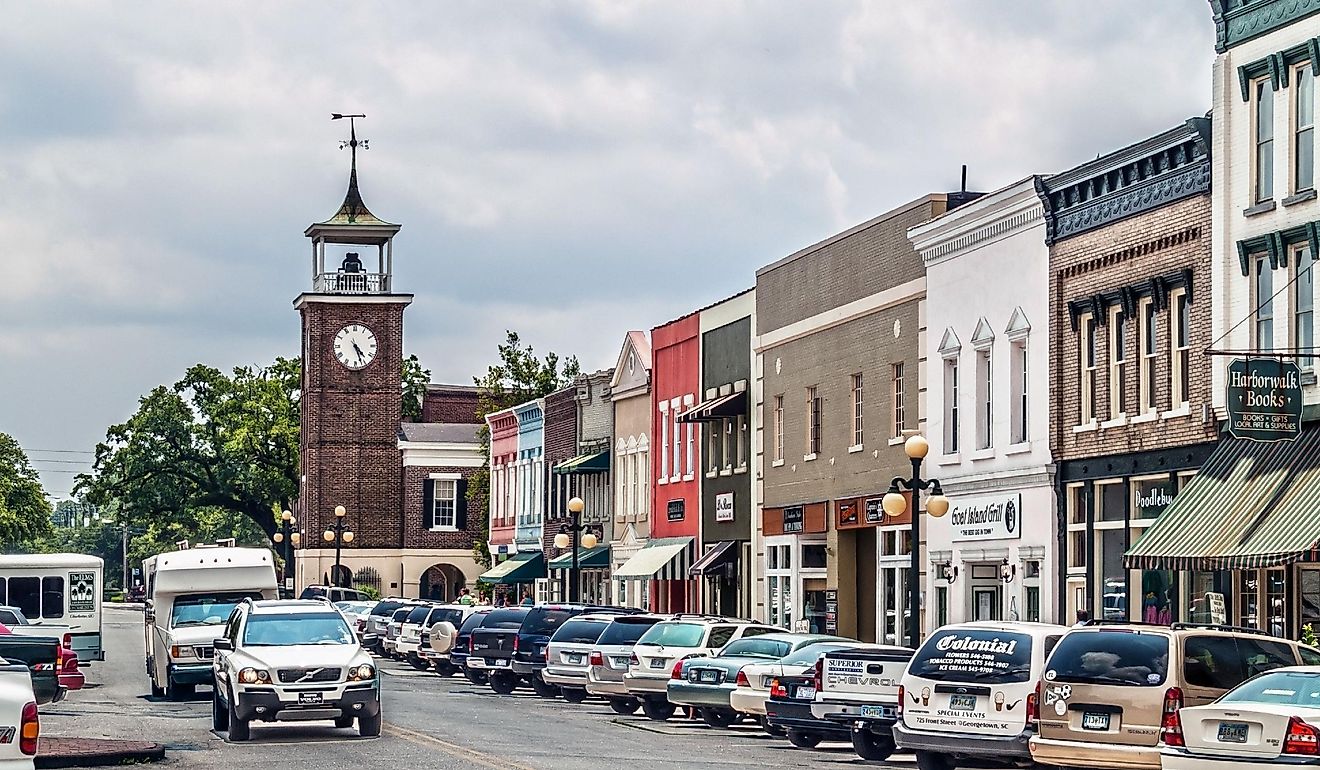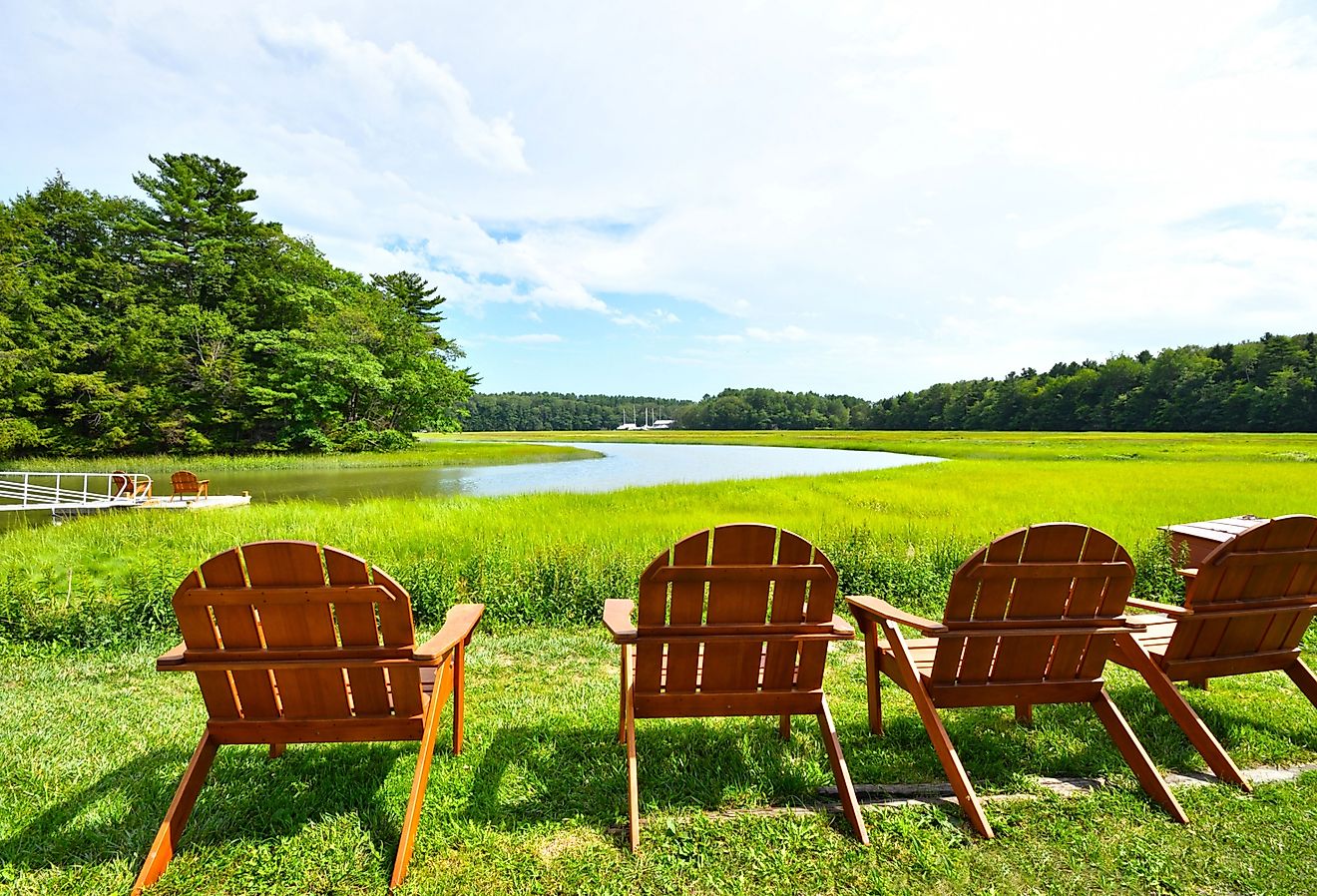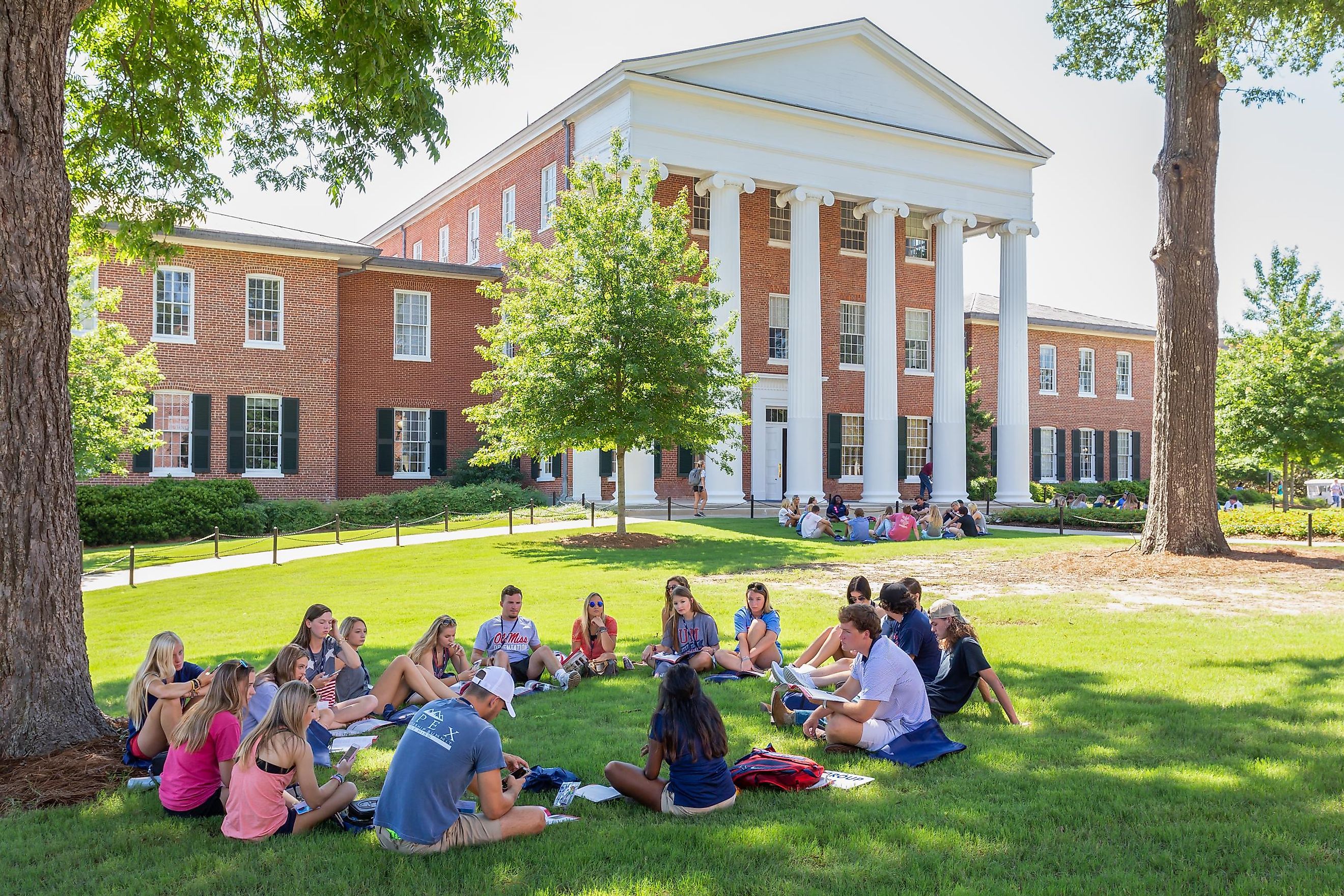
8 Most Idyllic Small Towns in Mississippi
Known as the "Magnolia State," Mississippi is bordered by the Mississippi River to the west and the Gulf of Mexico to the south. Its landscape includes forests, fertile delta plains, and coastal marshlands. Mississippi is pivotal in the history of blues music, hosting numerous artists and historical sites dedicated to the genre. The state's idyllic small towns look at the state's charming past and present. These eight are must-visit destinations.
Natchez
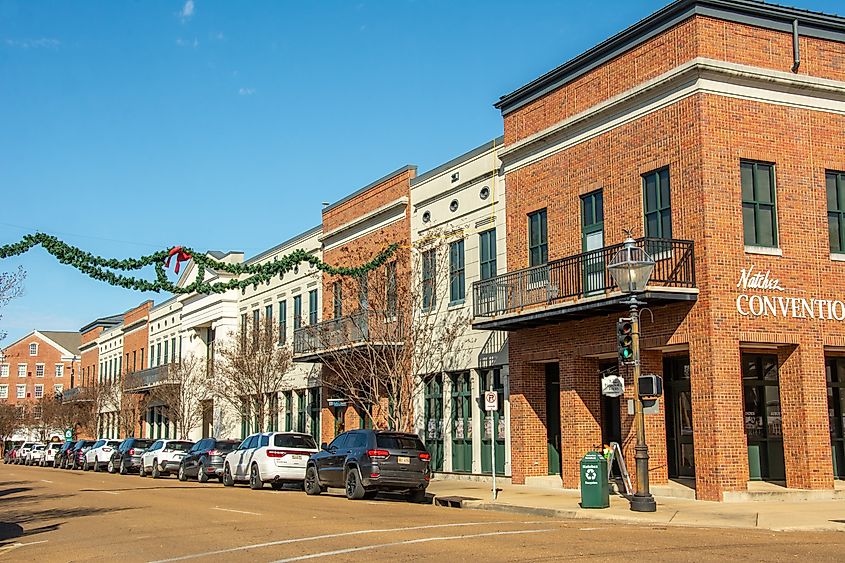
Natchez, Mississippi, is on the bluffs overlooking the Mississippi River. As the oldest permanent settlement on the Mississippi River, Natchez was founded by the French in 1716. Natchez has been under French, British, Spanish, and American control throughout its history. During the antebellum period, the area prospered as a center for cotton plantations and became renowned for its wealth and the grand mansions built by plantation owners.
Natchez National Historical Park looks at the area's heritage through its three main components: Fort Rosalie, the William Johnson House, and Melrose Estate. These sites educate visitors on the complex social dynamics of the antebellum South. The Natchez Balloon Festival, held annually in October, is where hot air balloons fill the sky above the Mississippi River, creating a colorful spectacle. The festival also features live music, food vendors, and crafts. Longwood, also known as Nutt’s Folly, is an unfinished antebellum mansion and the largest octagonal house in America. Construction was halted by the Civil War, leaving the upper floors incomplete.
Ocean Springs

View of Ocean Springs, Mississippi, located near Biloxi in Jackson County, United States.
Ocean Springs is a town located on the eastern shore of Biloxi Bay, part of the larger Gulf of Mexico. The Biloxi Indian tribe originally inhabited Ocean Springs before being settled by the French in 1699 as part of the colony of Fort Maurepas. It was named after the local medicinal springs, which were thought to have healing properties.
The Gulf Islands National Seashore has sandy beaches and opportunities for outdoor activities such as hiking, bird watching, and fishing. This protected region represents some of the last remaining undeveloped parts of the Gulf Coast. The Walter Anderson Museum of Art celebrates the life and work of Anderson, a major 20th-century American painter whose work captures the essence of the Gulf Coast’s environment. The museum houses an extensive collection of his work. Finally, the Fontainebleau Nature Trail is a peaceful hiking experience through an oak and pine forest that leads to stunning views of the bay.
Oxford
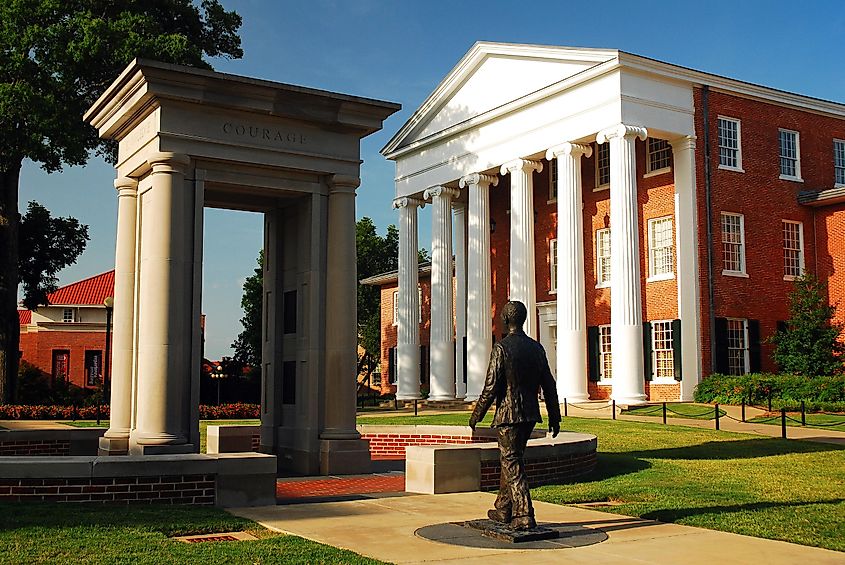
Oxford, Mississippi, is a Southern town established in 1837. It was named after the British city of Oxford in hopes of winning the bid to become the state's university town—a strategy that led to the founding of the University of Mississippi in 1848. The university has played a central role in the life of the community, attracting scholars, writers, and intellectuals, including Nobel Prize-winning author William Faulkner.
The University of Mississippi Museum, located on the university campus, has a collection that includes Greek and Roman antiquities, 19th-century scientific instruments, and Southern folk art. Rowan Oak, the historic home of William Faulkner, educates visitors on the life and times of one of America's most celebrated authors. Visitors can tour the house and explore its grounds, where Faulkner found much of his inspiration. For outdoor enthusiasts, the Thacker Mountain Trail is popular for hiking, mountain biking, and observing local flora and fauna.
Vicksburg
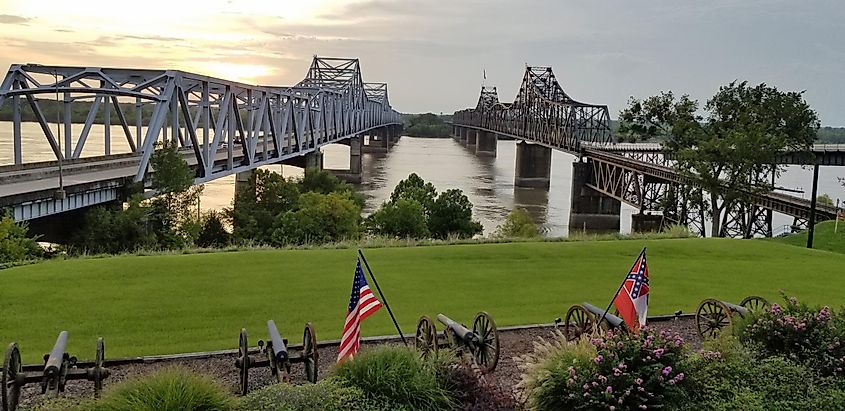
Two bridges crossing the Mississippi River in Vicksburg, Mississippi.
Vicksburg is also located on the bluffs of the Mississippi River. Founded in 1825 and named after Newitt Vick, a Methodist minister, Vicksburg grew into a prosperous community due to its position on the Mississippi River, facilitating the transport of agricultural products. The area's fate was sealed during the American Civil War when it became the site of the Siege of Vicksburg, a significant Union victory led by General Ulysses S. Grant in 1863.
Vicksburg National Military Park is a must-visit, preserving the site of the Civil War siege and battle. The park includes over 1,300 monuments and memorials, a restored Union gunboat, and a 16-mile tour road that narrates the story of the siege and its significance. The Old Courthouse Museum is an antebellum structure that houses artifacts from pre-Columbian times to the Civil War. The Biedenharn Coca-Cola Museum celebrates another aspect of American culture in the building where Coca-Cola was first bottled in 1894. This museum is a nostalgic look at the history of one of the world’s most famous soft drinks.
Bay St. Louis
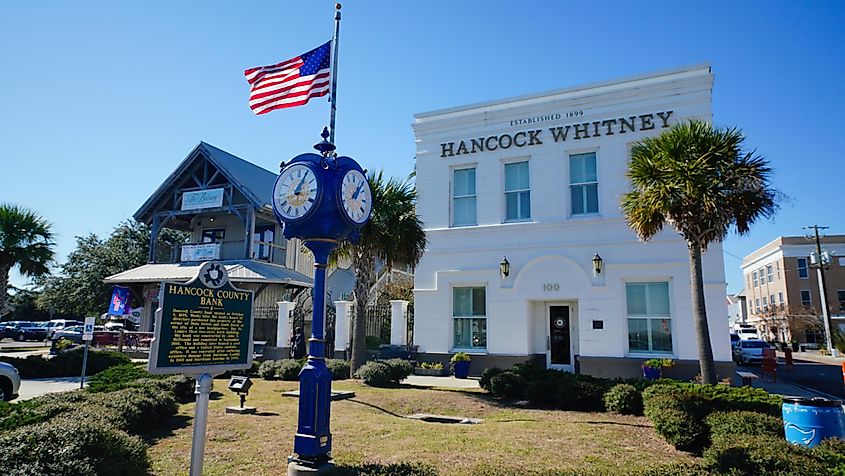
Bay St. Louis, Mississippi, is a coastal town on the Gulf of Mexico, just an hour's drive from New Orleans. Bay St. Louis was established in 1699 and named after King Louis IX of France. The area became a popular summer retreat in the 19th century due to its inviting climate and beachfront, and it has been a haven for artists, writers, and musicians ever since.
The attraction 100 Men Hall is a historic Blues music venue that has been part of the African American community since 1922. It has hosted some of the most significant figures in Blues history and today serves as a cultural arts center and museum. The Alice Moseley Folk Art & Antique Museum is located in the historic train depot and hosts the works of the late folk artist Alice Moseley. Her colorful paintings often depict rural Southern life. Bay St. Louis Beach stretches invitingly along the Gulf of Mexico, with sands and calm waters perfect for swimming and sunbathing.
Biloxi
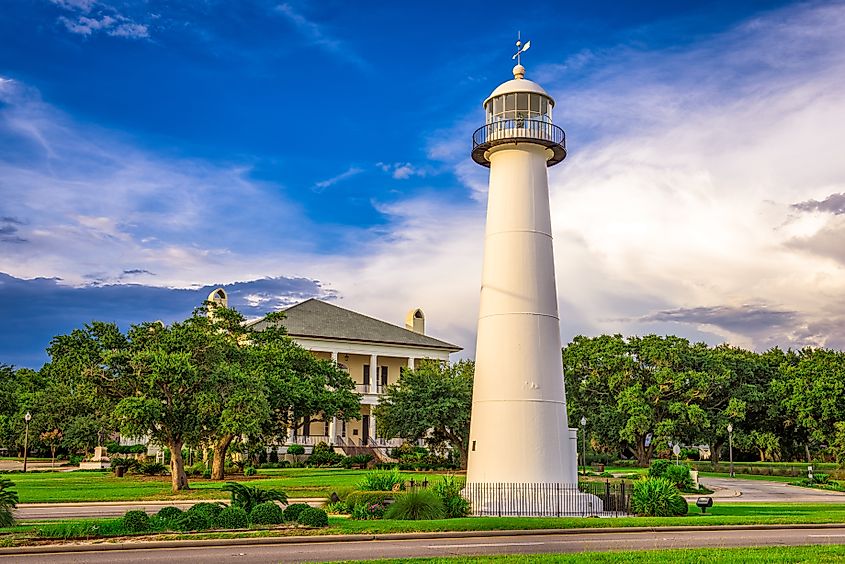
Biloxi, Mississippi, USA, featuring the iconic Biloxi Lighthouse.
Biloxi is one of the oldest communities in the United States, having been first settled by the French in 1699. Situated on the Gulf Coast, Biloxi became an important port and trading center, with its economy historically rooted in seafood harvesting, especially oysters and shrimp. Biloxi also became famous for its resort and gaming industries, transforming into a destination for entertainment.
The Biloxi Lighthouse is one of the town's most beloved landmarks. Erected in 1848, it has withstood many hurricanes and has been a navigational aid for nearly two centuries. Visitors can tour the lighthouse. The Maritime and Seafood Industry Museum delves into the region’s maritime heritage and the importance of the seafood industry in Biloxi's development. Exhibits include wooden boat building, shrimping, oystering, and the lifestyle and traditions of the coast's fishing families. Beauvoir, the Jefferson Davis Home and Presidential Library, is another significant site. This historic estate was the last home of Jefferson Davis and features restored buildings, gardens, and a museum.
Greenwood
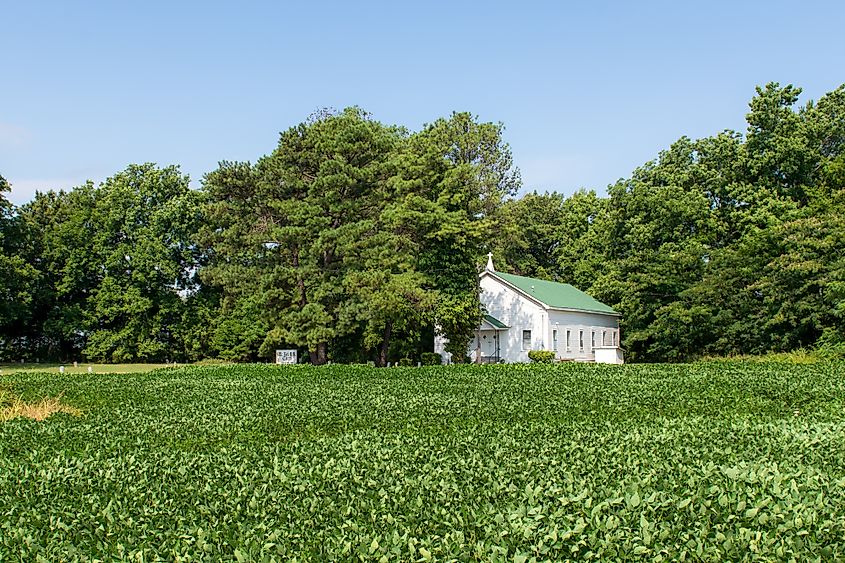
Greenwood, Mississippi, is in the heart of the Mississippi Delta. Initially inhabited by the Choctaw Nation, the area was developed for cotton plantations in the early 19th century due to its fertile alluvial soil, which made it one of the most prosperous regions for cotton in the Deep South. With the establishment of the railroad in 1886, Greenwood became an economic hub known for its bustling cotton market.
The Viking Cooking School has a unique experience where guests can participate in cooking classes and culinary demonstrations. It's an enjoyable way to immerse oneself in the local cuisine and culinary traditions that are a big part of Southern culture. The Museum of the Mississippi Delta is essential for understanding the region's broader historical and cultural background, with exhibits on Native American artifacts, regional art, and agriculture. The Greenwood Blues Heritage Museum and Gallery educates guests on the area's rich blues heritage with artifacts, memorabilia, and exhibits related to famous musicians from the Delta region.
Woodville
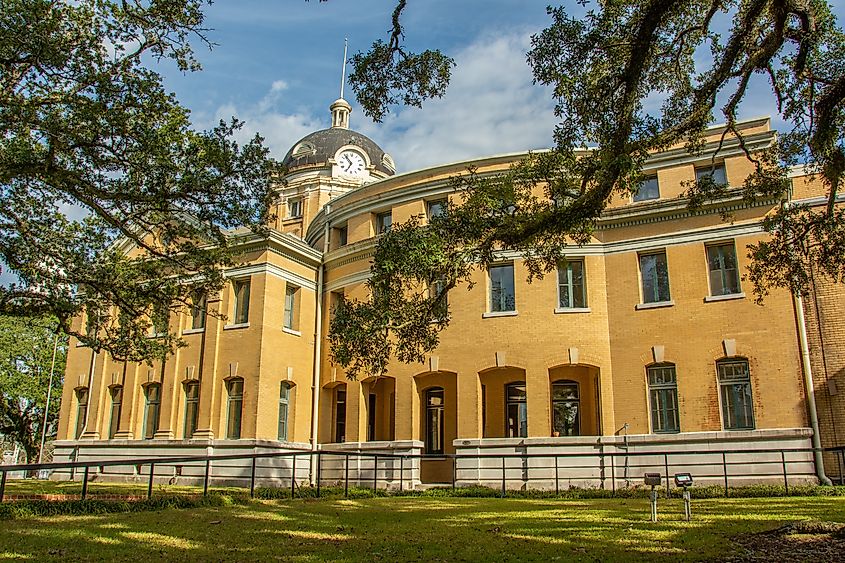
Woodville is in Wilkinson County, near the Mississippi-Louisiana border. This location made it another hotspot for the cotton trade, with a thriving economy based on plantation agriculture. The architecture and layout of Woodville reflect this prosperous era, with numerous well-preserved antebellum homes and buildings.
Rosemont Plantation is the boyhood home of Jefferson Davis, the only President of the Confederate States of America, and one of the best-preserved antebellum homes in the South. Touring Rosemont involves learning about the early life of Davis and the history of the period. Clark Creek Natural Area is an outdoor experience with over 50 waterfalls of varying sizes and more than 700 acres of forested area that are ideal for hiking and bird watching. Lastly, the Wilkinson County Museum is located in the historic downtown and housed in the old African American Wilkinson County Training School. The exhibits on local history (from prehistoric times to the present) highlight the region's evolution.
Discover Mississippi's Small Town Charms
Mississippi's idyllic small communities are treasure troves of American heritage and culture. Natchez, perched high on the bluffs of the Mississippi River, is a tapestry of antebellum architecture and historical roots that draw history enthusiasts and casual visitors alike. Ocean Springs, with its artistic flair and Gulf Coast charm, is a peaceful retreat with natural scenery. Meanwhile, Vicksburg's pivotal Civil War history and extensive military park make it a compelling destination for those interested in America’s military heritage. These eight idyllic towns embody the classic Southern charm.
